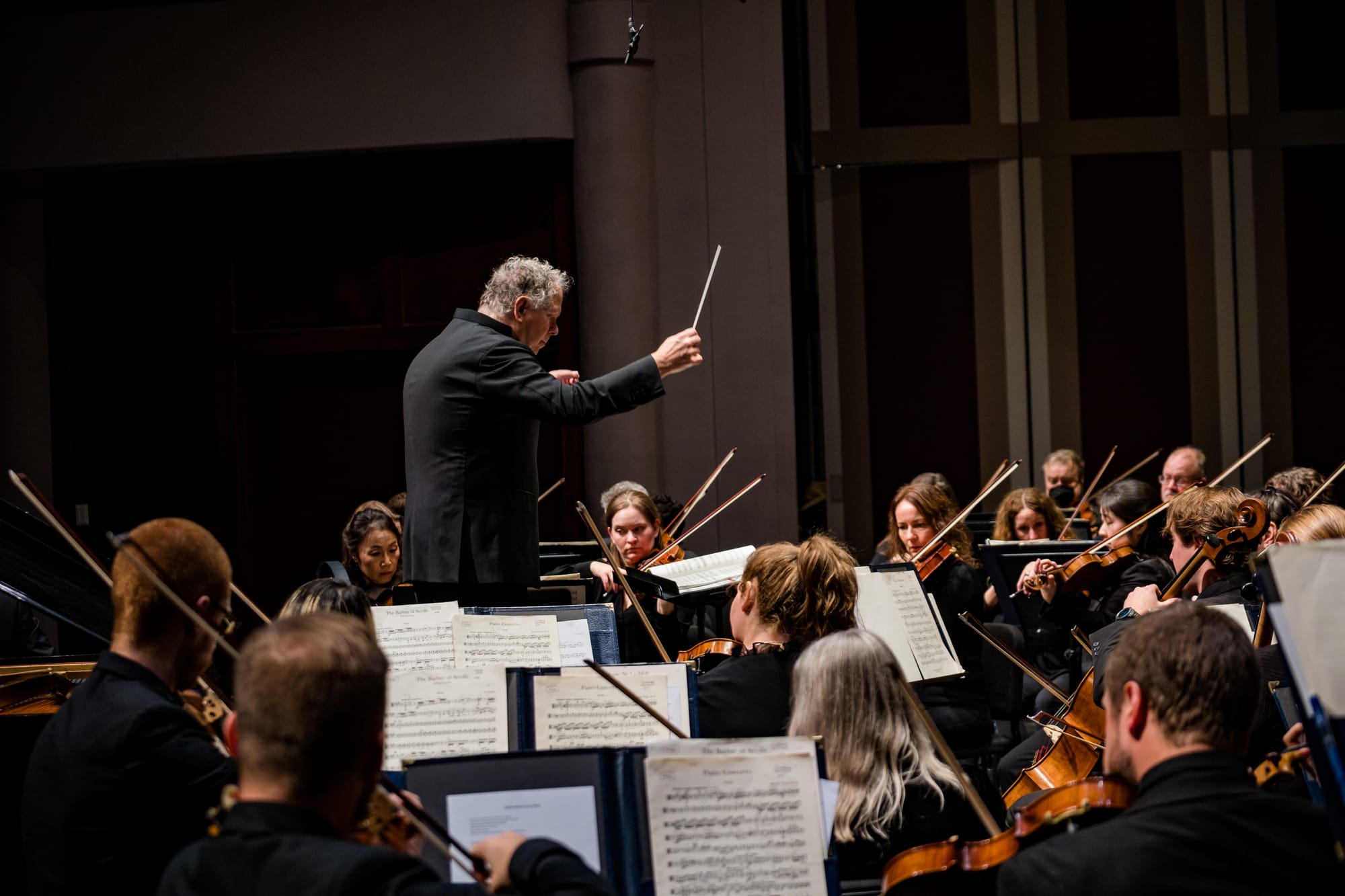Simplified: When the South Dakota Symphony Orchestra performs "Giants in the Earth" – an opera based on the book about Norwegian settlers in South Dakota – later this month, it'll be the third time in history the opera has been heard by an audience. It's also the first time in history it'll be recorded for future generations.
Tell me more
Delta David Gier's experience with the opera's source material dates back to his very first day on the job about 20 years ago. He was handed a copy of "Giants in the Earth" by a former symphony board member and told casually that there's an opera based on the book.
Why has no one heard of this opera?
It wasn't until years later that Gier read the book and later discovered the opera was written by a well-known 20th century composer, Douglas Moore.
- Moore won the Pulitzer Prize for his "Giants in the Earth" opera in 1951, and five years later debuted his most-known opera "The Ballad of Baby Doe."
It's unclear exactly why one opera is so renowned and the other almost lost to history, though Gier has a theory.
"I’m fully convinced that the only reason this opera’s not been done over the last 70+ years is that people have never heard it," Gier said of "Giants in the Earth."
How did the South Dakota Symphony get to play this?
A lot of dominoes had to fall into place, but one of the biggest obstacles was funding.
Symphony Executive Director Jennifer Teisinger said she's known about Gier's desire to stage "Giants in the Earth" since she started with the symphony six years ago.
"But the South Dakota Symphony didn't have the financial resources to make it happen, and David knew it," Teisinger said. "My attitude about it was always, ‘That would be an amazing thing to do, but we can’t afford it.’"
That changed in December 2022 with a financial gift from Dean and Rosemarie Buntrock. Their donation took the project from idea to reality, Teisinger said.
What happened next?
It took a fair amount of work to track down the score, and when it arrived, it was clear more work was needed.
"They sent me this big box, and it was all manuscript," Gier said. "It was all chicken scratch."
The symphony had to have the score professionally engraved – essentially the process of taking the chicken scratch and transforming it to readable music in a way that can be reproduced.
Then, there was the matter of figuring out the logistics for the semi-staged opera, a production that will have the orchestra on-stage as well as 10 professional singers in full costume with some props and set pieces.
- Gier and his stage director Bob Neu auditioned 100 singers to fill the roles for the opera.
Typically, a symphony performance will have an operations team of two people. For "Giants in the Earth," that team had to expand to 14, Teisinger said.
"Everything's bigger except the orchestra," she said.
What's the opera about?
The opera follows the narrative of the book, which was written by Ole Rolvaag (in a small cabin that now sits on Augustana University's campus) about Norwegian settlers in the Dakota Territory.
"It does revolve around this character of Beret and her psychology, her faith, and ultimately her madness at the end of the opera," Gier said. "So we go on that journey with her."
What happens next?
The symphony performance will take place April 26 and 27 at the Washington Pavilion. You can find tickets here.
- The performance will also be professionally recorded, as well as filmed by South Dakota Public Broadcasting.
Gier expects that once those recordings are available, we'll start to see more symphony orchestras across the country staging "Giants in the Earth."
"The opera world, as we know, is very excited about this," Gier said.
And as for the performance in Sioux Falls? Teisinger said, if for no other reason, come so that you can say you were there.
"You're a part of history," she said.

